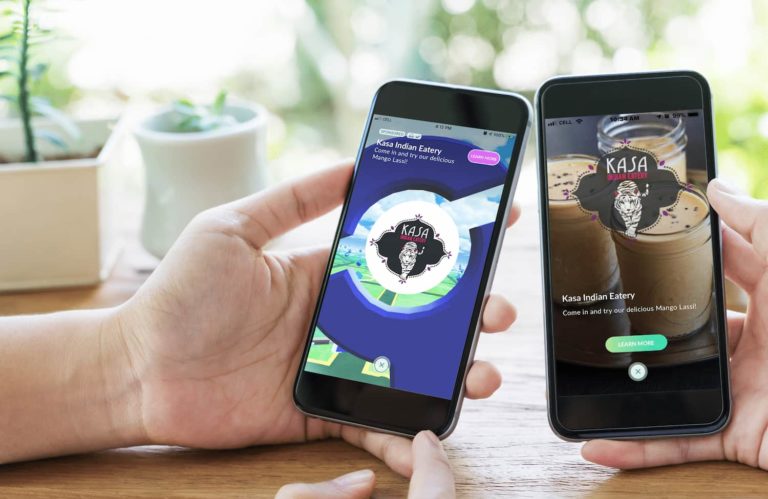
AR continues to evolve and take shape. Like other tech sectors, it has spawned several sub-sectors that comprise an ecosystem. These include industrial AR, consumer VR, and AR shopping. Existing alongside all of them – and overlapping to some degree – is AR marketing.
Among other things, AR marketing includes sponsored AR lenses that let consumers visualize products in their space. This field – including AR creation tools and ad placement – could grow from $2.78 billion last year to $9.85 billion by 2026 according to ARtillery Intelligence.
Factors propelling this growth include brand advertisers’ escalating affinity for, and recognition of, AR’s potential. More practically speaking, there’s a real business case. AR marketing campaigns continue to show strong performance metrics when compared with 2D benchmarks.
But how is this coming together? And what are best practices? These questions were tackled in a recent report by ARtillery Intelligence, containing narrative analysis, revenue projections, and campaign case studies. It joins our report excerpt series, with the latest below.
Discovery Engine
One untapped opportunity in AR is to position it as a local discovery engine. Similar to Google Lens, the idea is to evoke informational overlays for storefronts. This can boost local commerce, as examined in ARtillery Intelligence’s recent geo-local AR report.
Another way this can be done is in tandem with location-based gaming. And the model there is Niantic’s Sponsorship Platform. So far, Niantic has worked with multi-location brands such as McDonald’s and 7-Eleven. And its self-serve program opens it up to small businesses.
The program positions sponsors’ real-world locations as in-game waypoints, which results in measurable foot traffic and ringing cash registers. Waypoints include the gyms and Pokéstops where players congregate, and where sponsors can stimulate activity through in-game “raids.”
All of this stems from Niantic’s Wayfarer program. It lets players vote on locations for Pokéstops. Sponsors can now name those locations for a price, and can choose days and dayparts when raids happen. For example, they can boost traffic during slow hours.
The key word in all of this is organic, says Niantic. Sponsorship isn’t contrived but rather aligned with gameplay. Moreover, players can work up a hunger through PGO’s migratory play – making sponsorship a natural fit for fast food, coffee, and convenience stores.
ROI Signals
To put some numbers behind the above claim, Niantic says that 73 percent of players on average deviate from their regular walking routes – sometimes to sponsored locations – to achieve in-game milestones. 84 percent interact with commercial locations and 58 percent transact.
But the ultimate proof is in the performance seen by real brands who have put the sponsorship program to the test. Standouts so far include SK Telecom’s 10.8 percent boost in loyalty program signups (a campaign objective) during scheduled raids around its locations in Taiwan.
7-Eleven similarly activated raids around thousands of its locations in Taiwan and Mexico. And it saw a tangible revenue lift, to the tune of 10.5 percent on average. Convenience stores are a prime category for Pokémon Go sponsorship as noted above, and as seen separately from Circle K.
Beyond these ROI signals, there are macro benefits such as boosting brand sentiment. This happens as players associate brands with positive experiences – in some cases to fuel them for gameplay. This brand association can boost customer loyalty and lifetime value.
Tying these results back to Niantic’s organic approach, it attributes its success to having a player-first mindset. If followed, this can keep priorities straight and ensure that sponsored elements are always natural to gameplay, rather than interruptive or commercial-feeling.
The company also emphasizes the importance of narrative. This involves putting players at the center of gamified experiences. For example, there are in-game incentives for things like visiting a Pokéstop for five consecutive days. This gamification is a key lesson in AR marketing.
We’ll pause there and circle back in the next report excerpt with another AR marketing case study. Meanwhile, see the full report here.

